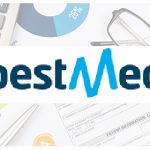DSP
A Designated Service Provider (DSP) is a healthcare provider (doctor, pharmacist, hospital, etc) that is a medical scheme’s first choice when its members need diagnosis, treatment or care for a PMB condition (see below for definition of PMBs). (source: Council for Medical Schemes)
Extended Benefit
This is “extra” coverage, usually for an out-of-hospital benefit, that is paid for by the scheme and not out of your medical savings. The Medical Aid Bible includes it with all the “day-to-day” benefits for each plan.
Formulary
This is a list of approved medicines for each condition. Each scheme has its own list/formulary which determines how it pays for medication. Some schemes have different lists (formularies) for diffrent plans.
If the medication you need is not on the formulary, the scheme might not pay for it, or might ask you for a co-payment.
MMAP
MMAP (Maximum Medical Aid Price) serves as a guide to determine the maximum price that medical schemes will reimburse for generic medication. You can download the price list here.
Network Provider
A healthcare service provider (doctor, pharmacy, hospital, optometrist etc) with whom the scheme has a payment or service arrangement.
Your plan might limit you to only providers in the network, or might require you to make a co-payment if your provider is not part of the network.
Often, if you use network providers, the scheme will cover the cost in full, but check your plan for details.
OAL: Overall Annual Limit
This is the maximum amount that the plan will pay to cover claims (in and out of hospital) for you or your family, per year.
Most plans have an unlimited OAL, but have sub-limits that apply.
OALs do not apply if you need to be treated for a PMB (see below) and have reached your OAL limit.
In other words, even if you have reached your limit, you cannot be denied treatment for a PMB.
PMBs
A PMB, or a Prescribed Minimum Benefit, is a set of conditions and their treatments that every plan must cover, regardless of what plan you are on, how much money (if any) is in your medical savings account, how much money you have already claimed etc.
There are 270 recognised PMBs, including all emergency (life threatening) conditions and 27 chronic conditions.
We have a more detailed explanation on PMBs here.
PPN
This is a specific network for optical benefits. Some schemes require that you use this network for all your optometry needs. You can read more on the PPN website.
Risk
Most in-hospital claims and some out-of-hospitals plans are paid “from Risk”. That means that the scheme pays for them out of its funds, not out of your funds (such as your savings fund). Essentially, “from risk” means “paid by scheme”.
Scheme Tariff
Plans cover your claims according to 100% or 150% or 200% or 300% Scheme Tariff. The Scheme Tariff is a pre-set amount that the Scheme will pay for a service.
For example: If a Scheme’s 100% tariff for a GP consult is R250:
- If the plan pays out at 100% Scheme Tariff for GP consults, the Scheme will pay R250 towards the consult, and you pay the balance out of pocket
- If it pays at 200%, the Scheme will pay up to R500 for the consult.
- If it pays at 300%, the Scheme will pay up to R750 for the consult.
There is no public reference as to what each Scheme pays out for what service. You will find out when you call for authorisation if your treatment or service will be covered in full.
Threshold
Some plans have a “threshold benefit”, which means that once all your out-of-hospital claims (including out-of-pocket expenses) add up to this threshold amount, the scheme will start to pay for out-of-hospital claims.
Medical Aid Bible helps South Africans choose the best medical aid plan for their needs. Quickly view the benefits on any open plan, and compare any two plans with a simple click.
.







